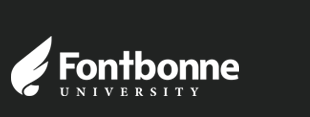
All Theses, Dissertations, and Capstone Projects
Year of Award
1994
Degree
Master of Business Administration (MBA)
College
College of Business & Professional Studies
Degree Program
Business Administration
Department
Business Administration
Keywords
capital, commercial, monetary, reform
Abstract
Since the early 1980s Indonesia has been engaged in serious efforts to reform the financial system, and thereby stimulate sounder economic growth. By 1982, the worsening price of oil and world-wide recession had undermined Indonesia’s balance of payments and fiscal balance, thus prompting a series of macroeconomics adjustments. Since the financial, monetary, and banking reforms announced in June 1983, the Indonesian government has issued as many as fourteen policy packages to deregulate the financial, monetary, and banking sectors. Economic development in the last twenty-five years was enhanced by supportive monetary policies. In the period of 1969-1982, the monetary policy was aimed at directly controlling the country’s economy by enforcing the credit ceiling and by controlling credit and deposit interest rates. In the mean time, the central bank (Bank Indonesia) was granting subsidized or liquidity credit to finance selected development projects and certain economic activities. By this monetary policy, the government was able to direct the flow of capital to higher priority projects, such as to certain manufacturing industries and to export oriented business activities.
Since 1983, Indonesia has been gradually making efforts to enter the era of the open market economy by introducing many policy packages intended to deregulate the economy by reducing government control and intervention. In a policy package introduced in June 1983, credit ceilings were removed and the banks were allowed to set their own interest rates. The interest rate will be determined by the demand for and supply of funds in the market place, just as any other price would be determined. The net effect of interest rate deregulation will mean that consumers will be able to deposit money and get something approaching the market rate for it. The banking sector has been more competitive, accordingly, which was not favorable for state banks which had been accustomed to government protection and subsidy. In the period from 1983 to 1990, there were three major policy packages issued by the government to deregulate various economic sectors, including the financial, monetary, and the banking sector. This deregulation on the part of the government has had a positive impact on Indonesia’s economy. Believing that domestic banks had achieved a sufficient level of selfreliance, as indicated by their improved capacity for raising funds and distributing them through loans, on January 29,1990, the government of Indonesia issued what is known as Pakjan 1990 (Policy Package of January 1990), which was intended to improve the credit lending system by gradually 3 reducing liquidity credits given by Bank Indonesia (BI), to continue banking support for maintaining the country’s self sufficiency in food, to step up the development of cooperatives, to increase investment flow, to reduce interest rates to a reasonable level, and to ensure the availability of funds for small businesses and cooperatives. This policy package was also to accelerate economic development in East Indonesia, the potential of which has not been fully tapped.
Since the deregulation of the banking sector in October 1988, nonforeign exchange commercial banks have given facilities for promoting their status to foreign exchange commercial banks, which are authorized to conduct foreign currency transactions and take in various forms of savings.
Indonesia’s reform efforts were generally successful despite several factors that differed from standard prescription.
Document Type
Restricted Thesis
Recommended Citation
Oka, Budiasa, "The Effects of Deregulation on the Banking Industry in Indonesia" (1994). All Theses, Dissertations, and Capstone Projects. 203.
https://griffinshare.fontbonne.edu/all-etds/203
Restricted
Available to Fontbonne users only. Please log in with your id + password.
If you are the author of this work and would like to make it openly accessible to all, please click the button above.



